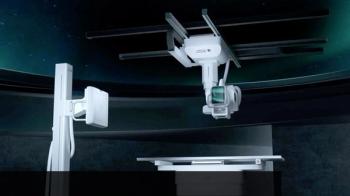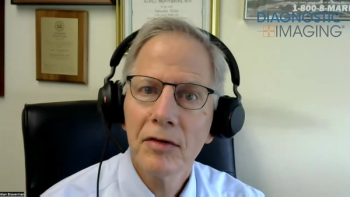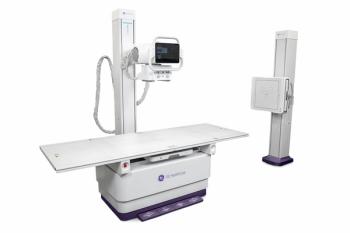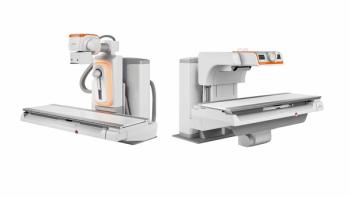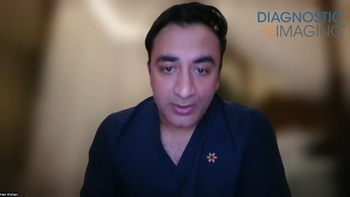
Swallowed Toothbrush on X-Ray? Could Signal Eating Disorder
Swallowed toothbrushes and other foreign bodies may alert radiologists to the possibility that the patient may have an eating disorder.
It’s not every day you come across a swallowed toothbrush on an X-ray. But when this happens, you may have the opportunity to make a significant contribution in the patient’s care. A patient who has swallowed a toothbrush or other foreign body could have an undiagnosed eating disorder.
People with eating disorders have a significantly higher mortality rate than the general population, but these disorders are not easily detected by clinicians unless the signs are obvious. Since radiologists are privy to the secrets inside the body, they may be well placed to be the first to become aware of the possibility that a particular patient may have an eating disorder, even if the radiologists were originally looking at images for a completely separate medical issue.
Alejandro Heffess, MD, a radiologist at Mount Auburn Hospital in Cambridge, Mass., co-authored a paper
Diagnosing eating disorders can be tricky and radiologists aren’t usually on the front line for this type of medical problem. What made you interested in this topic?
When I was a resident I saw two cases of women who swallowed toothbrushes. When you see cases like that you assume that this might be someone who is psychotic or mentally ill, and that mental illness can lead you to do odd things. But if you see it a second time, both times with young women, you start wondering about patterns. I talked to my wife who is a social worker and she suggested that the patients might be bulimic.
I Googled the topic and started finding references in the GI and surgical literature about this issue – of swallowing toothbrushes and other foreign objects in the eating disorder population. At that point, I thought that radiology could have an amazing role in this specific setting.
Once I had this on my radar, a woman came in to the ER who had just been married. She had swallowed a toothbrush. She was begging the people in the ER saying, “I just got married. Please don’t tell anyone, I’m so embarrassed. I was brushing very vigorously on the back teeth and I accidently swallowed. I just don’t want anyone to know.” What she didn’t want, though, was for her bulimia to be discovered.
When I saw that X-ray, I called the emergency room to ask if this was a woman with an eating disorder. They didn’t know and I don’t know if she admitted to it, but at least they pursued it.
Was there anything that surprised you when you were doing the research?
[[{"type":"media","view_mode":"media_crop","fid":"15692","attributes":{"alt":"","class":"media-image media-image-right","id":"media_crop_6021862609739","media_crop_h":"0","media_crop_image_style":"-1","media_crop_instance":"781","media_crop_rotate":"0","media_crop_scale_h":"0","media_crop_scale_w":"0","media_crop_w":"0","media_crop_x":"0","media_crop_y":"0","style":"width: 115px; margin: 5px; float: right; height: 115px;","title":"Alejandro Heffess, MD","typeof":"foaf:Image"}}]]Some of the concepts I thought were interesting included the [below normal] bone density issue in these young people. That means that these eating disorders affect people at a time (adolescence) when they should be developing their peak bone mass. Their bone development is hampered because of the disease. Even when these people get healthy, if they get healthy, they almost never regain bone density.
Another issue that was interesting was the issue of nutritional emphysema, where the body metabolizes the lungs. It will metabolize the lung to feed the brain and other organs. We also found that the brain atrophy was reversible. That was interesting.
Eating disorders are mental illnesses that affect almost every body system. As we went through the body from head to toe, we found that the disorders have a lot of ramifications on your health.
What kind of impression do you hope this is going to make on radiologists as they read this?
I think, number one is that we want to get the conversation going when we find that a younger person has swallowed a foreign body. We want people to recognize this, to get the ball rolling and ask, “Is this an eating disorder patient?” Once this is discovered, a whole lot of resources need to come into play in terms of psychiatric care, social work, nutrition, and so on. That basic finding is really easy. It’s so striking, to have a swallowed pen, a toothbrush, or a fork, or whatever it might be. I want people to have a light bulb go off and say this might be an eating disorder patient. That would be my first hope.
I think the other aspects of the article, where we went through the body, in terms of heart disease, dental disease, and esophageal disease, and all the body systems - that was all very helpful. If a patient comes to the hospital and is known to have an eating disorder, the radiologist can understand the related complications and can evaluate the patient’s imaging findings with that in mind.
This might also spur doctors who take care of patients with eating disorders to look at bone density. Usually this is something we do in post-menopausal women and older people. We don’t think about the 25-year-old, but maybe that needs to be evaluated.
What more would you like to say about your findings and your article?
When you write a paper like this, you don’t think about how, where, what it’s going to influence. It was also picked up by the American Association of Radiologic Technologists, a national association of all the technologists who work in X-ray and radiographic imaging. They had it on their website, as a lead article.
A local NPR station, WBUR, did a print piece on it and they interviewed me. I was happy that it got some attention in the lay media because, let’s say there’s a scenario where a young woman swallows a toothbrush and she hopes maybe this will just pass. And maybe she Googles it and she sees my paper or a blurb about it. She may learn that this needs to be managed urgently.
And I’m proud to know that even if one radiologist recognizes a swallowed toothbrush, if that person’s disease is unknown, I feel like I’ve made a decent contribution to somebody’s care.
Newsletter
Stay at the forefront of radiology with the Diagnostic Imaging newsletter, delivering the latest news, clinical insights, and imaging advancements for today’s radiologists.

